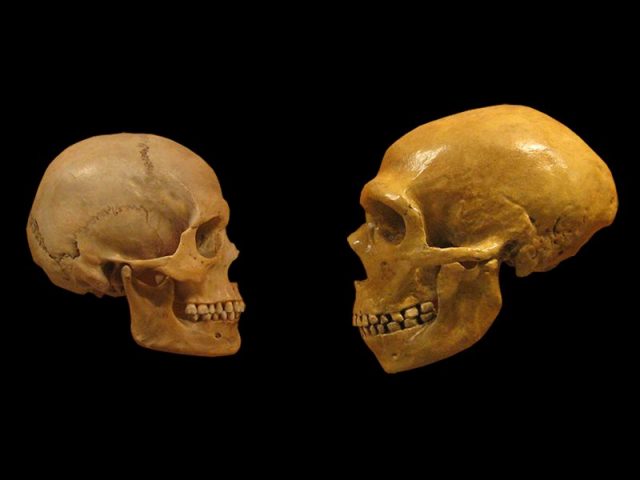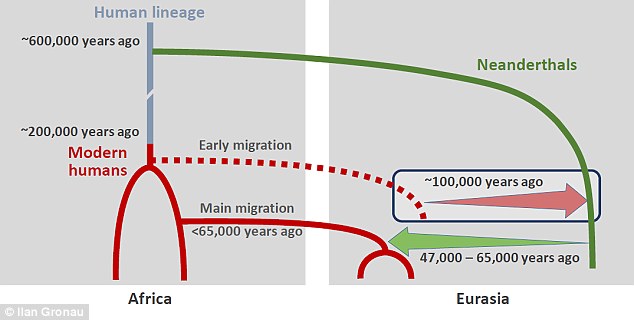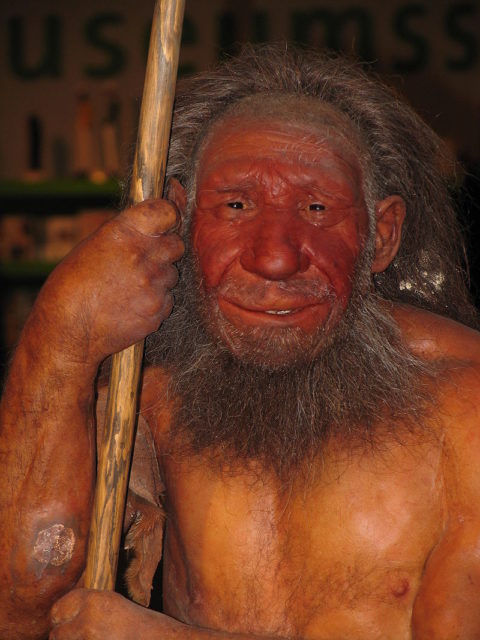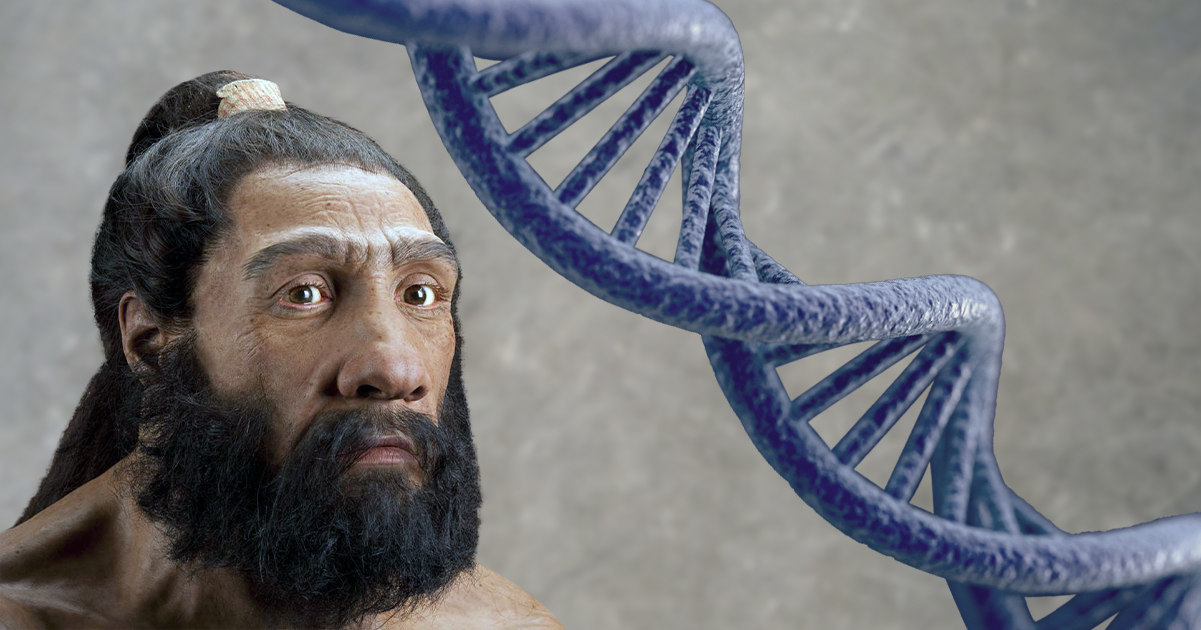A new study published shows that human DNA may have more Neanderthal in it than was previously believed. It’s well-known that Neanderthals and modern humans, Homo sapiens, have links but new research suggests that they may be more comprehensive than scientists first thought, according to Smithsonian magazine.
Both species have a common ancestor who originated in Africa, but both early humans and Neanderthals split off and began to take their own evolutionary path. Neanderthals were already well established in Asia and Europe when the first Homo sapiens came on the scene in Africa around 300,000 years ago.
Once Homo sapiens emerged, we more or less stayed in Africa for a long time – until around 60.000 years ago, although there were small migrations here and there before early modern humans really started to get on the move. Scientists even think that some groups of early humans traveled back and forth between Africa and Eurasia several times, although the evidence to support that idea is relatively thin.

There is a large body of evidence in the form of fossils and artifacts that tell us that Neanderthals and Homo sapiens coexisted in some areas for thousands of years, even interbreeding, before Neanderthals went extinct. Because of that, it has been estimated that between 1-4% of human DNA in people of Asian and European descent may have come from Neanderthals.

Neanderthals did not develop in Africa, and it’s always been supposed that their DNA would correspondingly be largely absent in humans of African descent, about 0.02%. New research was recently published in Cell which suggests that conclusion was wrong.
That research showed that people of African descent have closer to 0.5% Neanderthal DNA in their genome, a significantly higher percentage than previously believed. People of Asian and European descent still show a much higher percentage of Neanderthal DNA in their genomes, more like 1.7-1.8%.

The new information isn’t an indication that Neanderthals and early humans in Africa interbred directly, however. It’s much more likely that early Africans went to Europe, interbred with Neanderthals there, then returned to Africa, carrying the Neanderthal DNA with them.

It’s not the first time this particular idea has been considered. However, when the Neanderthal genome was mapped in 2010 it didn’t show any of the same signatures as are found in modern African genomes. Having said that, most genomic studies have been done on people of European descent. African genomes have been strongly underrepresented, and preliminary studies have been flawed, according to a 2016 report in the New York Times.
What makes this new study different is that the team of researchers, led by Joshua Akey, a geneticist at Princeton University, found a new way of looking for past incidences of inbreeding. One of the things they’ve done is to directly compare modern genomes to those of Neanderthals. They used a sample of over 2,500 modern genomes gathered from Europe, South Asia, America, East Asia, and Africa.
What they found was that people of African descent had 17 million base pairs that were the same as the Neanderthal remains. Those of European descent had around 51 million overlapping base pairs, and there were around 55 million for those of Asian descent. Once those broad categories were established, the team compared the three groups to each other, and found that the African genomes had a greater similarity to those from Europe, rather than the Asian group.
Their findings suggest that there were multiple migrations between Africa and Eurasia, and that early humans may have gone back and forth several times. As a result, the interactions between the two species may have produced something more like a web, with many intersections, rather than a tree, with clear offshoots. The Neanderthals in Europe picked up a little Homo sapiens DNA, and the early humans picked up a bit Neanderthal, which they carried with them as they migrated back and forth between Eurasia and Africa.
Related Article: Why Neanderthals Were Constantly Hunched Over
The study isn’t conclusive, and the Neanderthal DNA used for comparison was from remains found in Siberia, which is an area that probably didn’t feature into the posited multiple-migration theory, but it still offers some interesting food for thought with regard to how early populations spread and what happened when the different species found themselves in close proximity.
